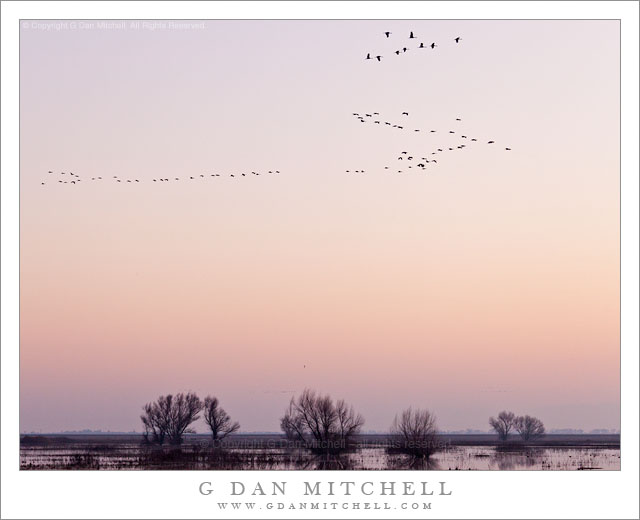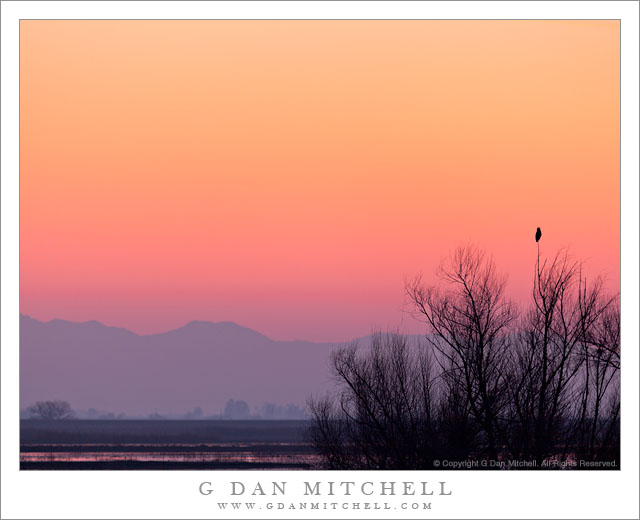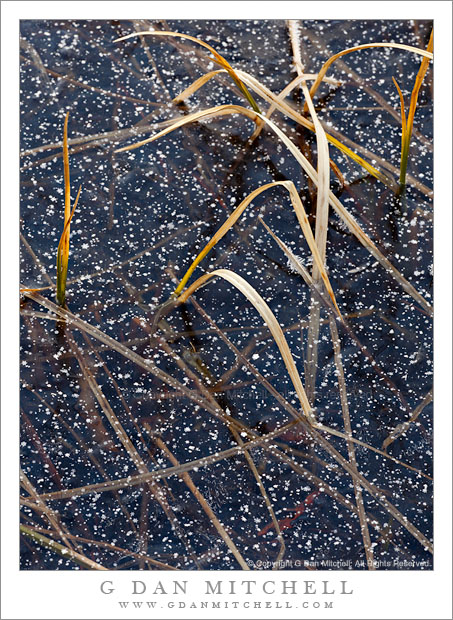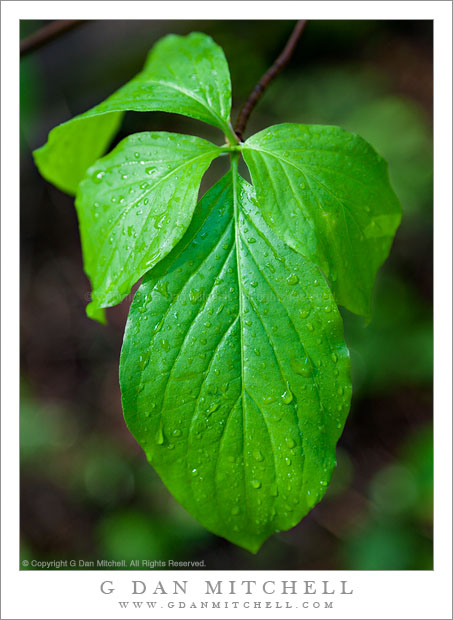
Migratory Birds, Dusk. Merced National Wildlife Refuge, California. January 28, 2012. © Copyright 2012 G Dan Mitchell – all rights reserved.
Flocks of migratory birds fly over the Merced National Wildlife Refuge at dusk, San Joaquin Valley, California.
I think that I’m as interested in the landscape of the Central Valley of California as I am in the migratory birds that I went there to photograph during the last weekend of January. I’m still surprised to find that this landscape is more varied than I realized for many years, even though I’ve lived in California almost all of my life and I frequently drive through the Valley on my way to the Sierra and other places. I used to think of it as “that hot place between here and there,” at least in the summer. Later I found out about the very different winter climate there, where it is often foggy for days or weeks on end. The, after I learned about the amazing annual arrival of migratory birds, I realized just how much of the Valley is waterlogged at least part of the year.
The area of the Merced National Wildlife Refuge is one such area. Located more or less between the towns of Merced and Los Banos, it holds many seasonal ponds, and these ponds are the winter homes of thousands and thousands of birds. On our visit during the final weekend of January 2012, the birds were there, all right. However, they were mostly too far away to photograph them easily except when they occasionally passed over head. But the landscape was as accessible as ever. Here I wanted to accentuate the vast sky above the flat surface of the valley, so I tilted the camera up a bit so that the flooded fields and sparse trees sat at the bottom of the frame, and the gradient of color and light fills most of the frame, interrupted by passing flocks of migratory birds.
G Dan Mitchell is a California photographer whose subjects include the Pacific coast, redwood forests, central California oak/grasslands, the Sierra Nevada, California deserts, urban landscapes, night photography, and more.
Blog | About | Flickr | Twitter | Facebook | Google+ | 500px.com | LinkedIn | Email
Text, photographs, and other media are © Copyright G Dan Mitchell (or others when indicated) and are not in the public domain and may not be used on websites, blogs, or in other media without advance permission from G Dan Mitchell.



